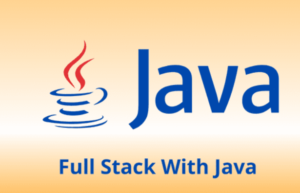Performance optimization is crucial for Java full stack applications to ensure they run efficiently and provide a smooth user experience. Here are some performance optimization techniques you can apply:
- Use Efficient Algorithms and Data Structures:
Choose algorithms and data structures that are optimized for the specific tasks and data manipulations your application requires. Consider the time and space complexity of algorithms and use data structures like HashMaps, ArrayLists, and HashSets appropriately. - Database Optimization:
Optimize database queries by using proper indexing, query optimization techniques, and database caching. Analyze slow-running queries and optimize them using techniques like query tuning, denormalization, or adding appropriate indexes. - Connection Pooling:
Implement connection pooling to reuse database connections instead of creating a new connection for each request. Connection pooling minimizes the overhead of establishing new connections and improves database performance. - Caching:
Implement caching mechanisms at various levels of your application, such as database query caching, object caching, or page caching. Use caching frameworks like Redis or Memcached to store frequently accessed data in memory and reduce the load on the backend systems. - Minimize Network Round Trips:
Reduce the number of network round trips by optimizing API calls and database queries. Fetch only the necessary data, use batch processing, and leverage pagination techniques to minimize the amount of data transferred between the client and server. - Compression and Minification:
Compress and minify static resources like JavaScript, CSS, and HTML files to reduce their size and improve loading times. Use tools like gzip or Brotli for compression and minimize the use of whitespace, comments, and unnecessary characters. - Asynchronous Processing:
Utilize asynchronous programming techniques, such as Java’s CompletableFuture or reactive programming with frameworks like Spring WebFlux, to handle concurrent requests and I/O operations efficiently. Asynchronous processing reduces thread blocking and enables better resource utilization. - Load Balancing and Horizontal Scaling:
Distribute the load across multiple servers by implementing load balancing techniques. Use technologies like Nginx or a load balancer provided by cloud platforms to distribute incoming requests evenly among multiple backend instances. Horizontal scaling involves adding more instances of your application to handle increased traffic. - Profiling and Monitoring:
Use profiling tools like Java Flight Recorder or VisualVM to identify performance bottlenecks in your application. Monitor key metrics like response times, CPU usage, memory usage, and database query performance. This helps you pinpoint areas for optimization and proactively address performance issues. - Code Optimization:
Optimize your Java code by removing unnecessary calculations, reducing object creation, and minimizing the use of synchronized blocks. Profile your code to identify areas where optimizations can be applied, such as loop unrolling, lazy loading, or caching frequently used objects. - Resource Management:
Properly manage resources like file handles, database connections, and network connections. Close resources as soon as they are no longer needed to avoid resource leaks and improve overall performance. - Use Caching at the Application Level:
Implement application-level caching using libraries like Ehcache or Caffeine to cache frequently accessed data or expensive computations. This reduces the need to fetch data from the database or perform expensive operations repeatedly. - Optimize Frontend Performance:
Apply frontend performance optimization techniques like lazy loading of images, minifying and compressing frontend assets, using CDNs for static files, and leveraging browser caching. This improves the loading time and responsiveness of your application.
Remember to perform benchmarking and load testing to evaluate the impact of optimizations and ensure they are providing the desired performance improvements. Continuously monitor and fine-tune your application to maintain optimal performance as your application evolves over time.




